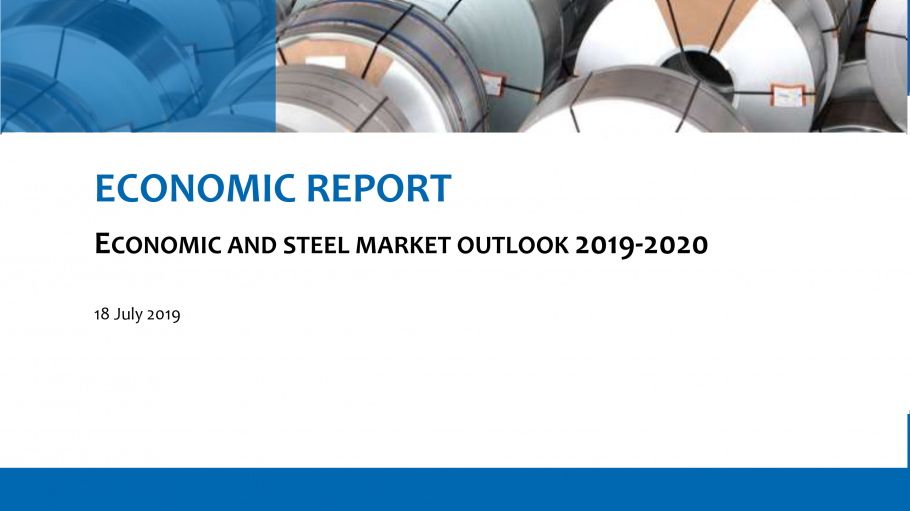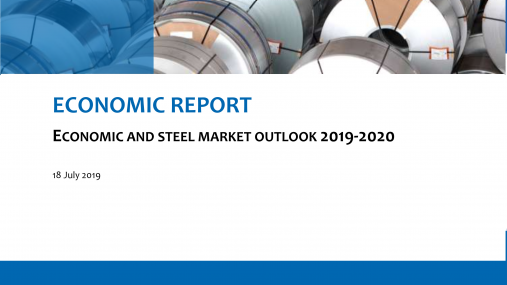
Publications » Economic and market outlook » Economic and steel market outlook 2019-2020, third quarter
Economic and steel market outlook 2019-2020, third quarter
Downloads and links
Recent updates

Apparent steel consumption fell by 2.5% year-on-year in the first quarter of 2019. The negative trend in steel demand is the result of the ongoing slump in EU’s manufacturing sector due to weakened exports and investment. Forward-looking indicators signal, at best, a low-level stabilisation later this year, but no rebound.
The manufacturing sector in the EU may have not seen the worst yet: a deepening escalation of the trade war between the US and several of its main trading partners and a no-deal Brexit would severely impact global trade conditions, trigger a further deterioration in business sentiment and lower investment growth. In that scenario, the EU steel sector would suffer badly because at the same time the risk of import distortions increases due to the expansion of the size of the safeguard measures’ quota both this year and next.

Download this publication or visit associated links
Brussels, 20 November 2025 – Today the European Steel Association (EUROFER) elected its new Board, President and Vice-Presidents (see Annex). Henrik Adam was confirmed as President of the organisation for another two-year term.
Brussels, 22 October - Ahead of the European Council meeting on 23 October, Europe’s steel and automotive industries — two strategic pillars of the EU economy — are issuing a joint call for a realistic and pragmatic pathway to transformation and keeping investments in Europe. Together, these sectors form the backbone of Europe’s industrial strength, supporting over 13 million jobs in automotive and 2.5 million in steel (directly and indirectly), and driving innovation across entire value chains.
Joint Statement